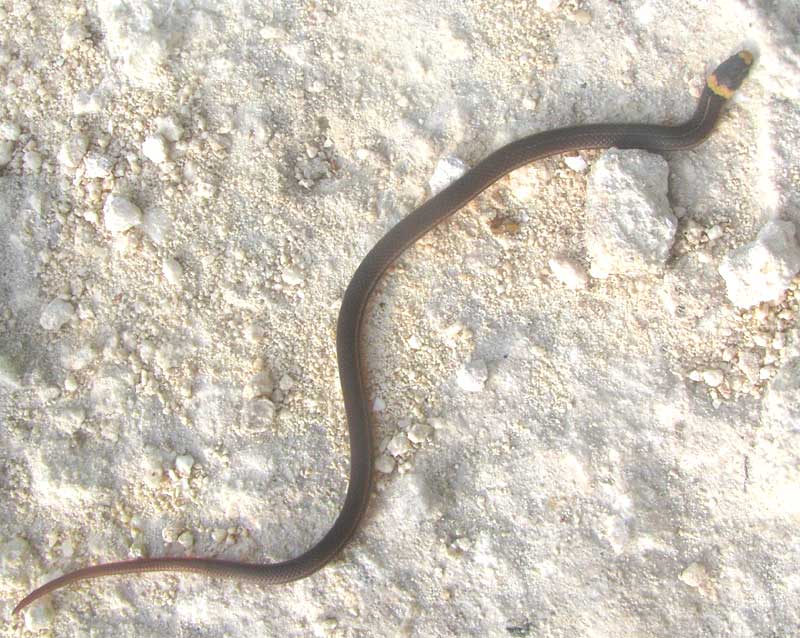Excerpts from Jim Conrad's
Naturalist Newsletter

from the July 24, 2011 Newsletter issued from Mayan Beach Garden Inn 20 kms north of Mahahual; Caribbean coastal beach and mangroves, ~N18.89°, ~W87.64°, Quintana Roo state, MÉXICO
CENTIPEDE-EATER
Earlier that morning on the white sand road paralleling the beach I'd come upon a seven-ft (2m) Boa Constrictor, so it was fitting that now the snake my bike almost had run over hardly was the length of my finger, and was slender as a matchstick. That's it above.
The snake was so slender that I couldn't pick him up without being so rough I might hurt him, so he wiggled away without my getting the head picture often needed for proper identification. However, maybe that wasn't such a great loss, because with the snake's distinctive tan collar and nose tip, surely it'd be easy to identify.
And it was: It's the Mayan Black-headed Centipede-eater, TANTILLA CUNICULATOR, endemic to the northeastern half or two thirds of the Yucatán Peninsula, northern Belize and northern Guatemala. In Amphibians and Reptiles of Northern Guatemala, the Yucatán, and Belize, Jonathan Campbell writes that the snake reaches 25cm, or ten inches, so apparently our little snake is a very young one.
Campbell also describes the species as secretive and inhabiting tropical moist and dry forests, where presumably it feeds on invertebrates. Actually, few details are supplied for the species, and there's not much more on the Internet. Maybe we're contributing something to science here just by reporting that sometimes in our part of the world Tantilla cuniculator can be found crossing a sand road in bright, mid-afternoon sunlight.